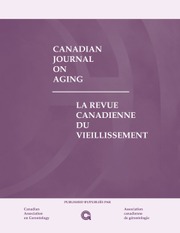No CrossRef data available.
Article contents
Return Discussions to Reduce Missing Incidents in Persons Living with Dementia: Findings from a Scoping Review and Individual Interviews
Published online by Cambridge University Press: 06 December 2024
Abstract
Persons living with dementia are at risk of becoming lost. While return discussions after missing incidents are common with children, these discussions are seldom done with persons living with dementia. Our objective was to describe the use of return discussions with persons living with dementia according to the literature and practice. We conducted a scoping review using 19 databases to locate scholarly and grey literature on return discussions, followed by 20 semi-structured interviews with first responders and service providers in Canada and the United Kingdom (UK). Eleven scholarly and 94 grey sources were included, most from the UK, related to missing children, none included persons with dementia. According to participants, although there was no standardized procedure, there were themes about conditions that facilitate return discussions. This was the first study to examine return discussion practice in dementia, and results can inform development of evidence-based protocols.
Résumé
Les personnes atteintes de démence sont exposées au risque de se perdre. Les discussions de retour au domicile sont courantes avec les enfants, mais elles sont rarement menées avec les personnes vivant avec la démence. Notre étude visait à décrire le recours aux discussions sur le retour avec les personnes atteintes de démence d’après la littérature et la pratique. Nous avons mené une étude de portée couvrant 19 bases de données, afin de recenser la littérature scientifique et la littérature grise relatives aux discussions sur le retour. Nous avons ensuite mené 20 entretiens semi-structurés avec des premiers répondants et des fournisseurs de services au Canada et au Royaume-Uni. Les onze sources scientifiques et 94 sources grises retenues pour l’étude, dont la plupart émanaient du Royaume-Uni, portaient sur des enfants perdus, mais aucune ne portait sur des personnes atteintes de démence. D’après les participants, malgré l’absence d’une procédure standardisée, on pouvait dégager certains thèmes sur les conditions qui facilitent les discussions sur le retour. Cette étude était la première à examiner la pratique des discussions sur le retour dans le contexte de la démence, et ses résultats peuvent informer l’élaboration de protocoles basés sur les preuves.
Keywords
- Type
- Article
- Information
- Copyright
- © Canadian Association on Gerontology 2024



